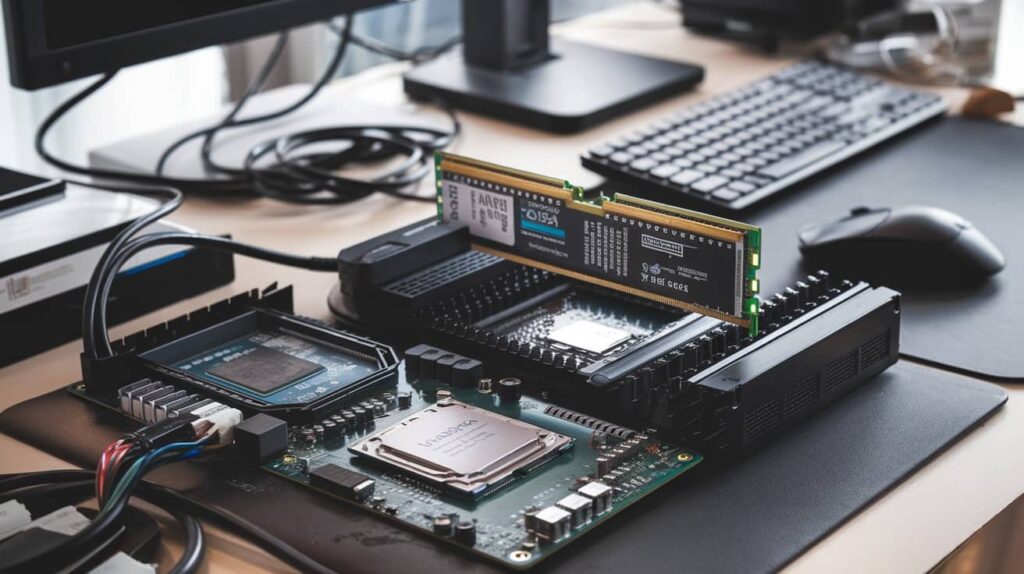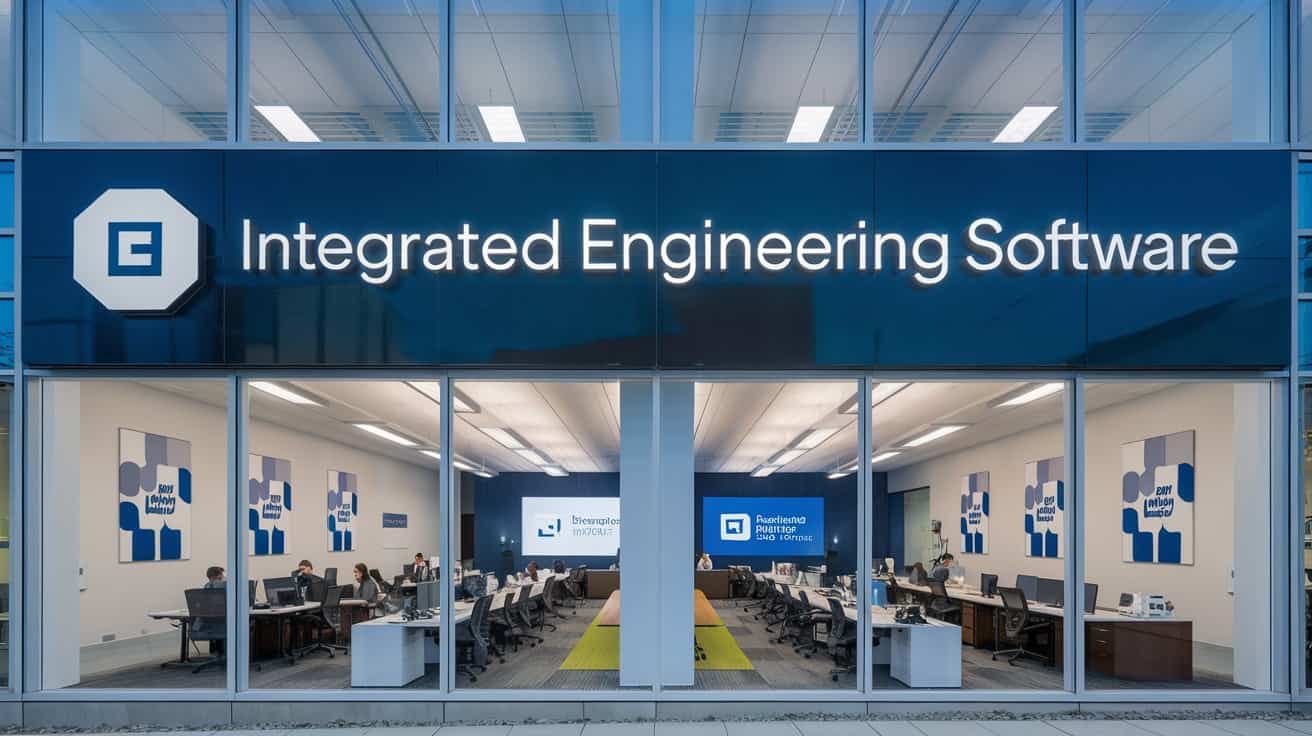With over ten years in engineering design and simulation, I’ve worked with many tools—some reliable, others frustrating. One name I kept hearing from senior engineers, especially for electromagnetic field analysis and open-region modeling, was Integrated Engineering Software. I didn’t try it at first, sticking with my regular FEM-based tools.
But during a particularly complex project involving large open spaces, my usual software couldn’t deliver the accuracy I needed. That’s when I turned to Integrated Engineering Software—and it made a significant difference in both the results and my overall workflow.In this article, I’ll share what I’ve learned about this powerful tool — not just as a technical breakdown, but as someone who’s personally used it and seen where it shines.
What is Integrated Engineering Software?

Integrated Engineering Software is a Canadian company founded in 1984, known for creating advanced simulation tools for engineers and scientists. Their software helps solve complex physical problems involving electromagnetics, electrostatics, magnetostatics, thermal, structural, and motion analysis.
These tools are widely used in industries such as transformer design, antenna modeling, sensor development, and even medical devices. What truly sets them apart is their use of the Boundary Element Method (BEM), which offers exceptional accuracy and flexibility—especially for analyzing large open regions—making them a top choice for high-precision engineering projects.
Why Boundary Element Method (BEM) Matters?
Here’s a little background. Most simulation tools use Finite Element Method (FEM) or Finite Difference Time Domain (FDTD) — both are solid, but they have their limitations, especially when it comes to open-region problems. These are problems where you need to simulate the behavior of fields in infinite or semi-infinite spaces — like outside an antenna, or around a high-voltage device in the air.
This is where BEM comes in. Instead of meshing the entire space like FEM, it only requires the surface to be meshed. This makes simulations faster and often more accurate when working with unbounded or open spaces.
Integrated Engineering Software is the industry leader in using BEM, and they do it really well. The difference it made in my project was immediately noticeable — less meshing, more accurate results, and better handling of the physics involved.
A Unique Combination – BEM, FEM, and FDTD All in One!
One thing I personally appreciated about their approach is that they didn’t just rely on BEM. They also offer FEM and FDTD solvers in the same suite. This means you’re not stuck with one method — you can choose the solver that best fits your project’s needs.
This kind of flexibility is rare. Most other software forces you to use only one type of solver unless you buy multiple products.In Integrated’s software, switching between solvers felt natural. Their interface is built to support multi-physics environments, so you’re not constantly jumping between tools or dealing with compatibility issues.
My First Project Using Integrated:
Let me walk you through my first hands-on experience. I was working on a project involving a magnetic sensor that needed to operate in a large open region. The FEM-based tool I used initially gave me results that just didn’t align with lab tests. It became clear that edge effects and boundary approximations were skewing the accuracy.
I switched to Integrated Engineering Software (specifically their product called MagNet), and after setting up the geometry and boundary conditions, I was amazed at how naturally the software handled open-space boundaries. There was no need for artificial far-field boundaries, which often introduce errors in FEM.
The simulation ran faster and gave results that matched real-world measurements within 2-3%. For me, that kind of accuracy in a complex field setup was a huge win.
What’s New in Version 12.0?
Recently, I got a chance to explore Version 12.0 of Integrated Engineering Software, and there are some notable upgrades that I think deserve attention:
Laminations Analysis:
This new feature in Version 12.0 is a great help for transformer and electric machine designers. It improves accuracy in modeling magnetic field distribution in laminated cores, which can reduce errors and boost performance predictions. I found it especially useful in achieving more realistic simulation results in complex magnetic structures.
Magnetization Direction and Anisotropy:
You can now define exact magnetization directions and simulate magnetic anisotropy—critical for working with advanced magnetic materials. This upgrade allows better control over material behavior and results, especially in motors and sensors. It made my material modeling far more precise than before.
Break Surface / Break Volume Commands:
These commands let you split complex 3D geometries with ease. I used them on a “to-be-magnetized” model, and it saved me hours of manual CAD adjustments. It’s a real time-saver when dealing with intricate shapes or when prepping models for magnetic analysis.
Improved API Support:
Version 12.0 now includes a broader set of API functions. This is perfect for automating repetitive tasks or integrating with custom scripts. I used it to build batch simulations using Python, which helped me save both time and effort in large simulation runs.
Better Workspace and UI:
The improved workspace feels cleaner and more responsive. Dockable panels, easier navigation, and smoother overlays make daily use more comfortable. These UI upgrades don’t just look nice—they help streamline simulation setup and results analysis, which really matters when you’re working under tight deadlines.
Support and Documentation:
One of my biggest worries when trying new software is getting stuck. No matter how powerful a tool is, if you don’t have solid support, you’re going to waste hours figuring things out.
Luckily, Integrated’s support team is actually helpful. I had a few questions in my first few days, and their response time was under 24 hours — sometimes just a few hours. The documentation is well-written, and they have tutorials that make onboarding easier.
I’ve worked with tools from big names where you had to go through layers of ticketing systems or wait days just for a basic answer. Integrated didn’t put me through that frustration.
Who Should Use Integrated Engineering Software?
- Electrical and Electromagnetic Engineers – This software helps solve tough electromagnetic problems, including antenna design and power system components, with high precision and reliable results.
- Sensor Designers – Integrated Engineering Software lets you model sensor behavior under different field conditions, improving design accuracy and device performance.
- Motor, Transformer, and Magnet Designers – Its advanced lamination analysis and magnetic anisotropy features are perfect for optimizing electrical machines and magnetic devices.
- Research Professionals – The software’s flexibility and multiple solver methods (BEM, FEM, FDTD) make it valuable for detailed academic and industrial research projects.
- Companies Needing Open-Region Accuracy – For products operating in large or open environments, Integrated’s Boundary Element Method provides unmatched accuracy in field modeling, helping companies meet strict performance standards.
Applications of Integrated Engineering Software:

Electromagnetic & RF Design:
Integrated engineering software plays a crucial role in antenna design, microwave circuits, and EMI/EMC testing. By leveraging BEM and FEM solvers, engineers achieve precise signal integrity analysis, ensuring compliance with industry standards like FCC and IEEE. These tools help optimize RF components, reduce interference, and enhance wireless communication systems with high-fidelity electromagnetic simulations.
Mechanical & Structural Analysis:
From stress simulations to thermal management, integrated engineering software provides robust solutions for mechanical design. Engineers use FEM-based tools to analyze material strength, fatigue, and deformation under load. Advanced thermal modeling ensures efficient heat dissipation in electronics and machinery, improving product durability and performance across automotive, aerospace, and industrial applications.
Acoustics & Vibration Control:
The efficiency of BEM makes integrated engineering software ideal for noise reduction and vibration studies. It accurately models sound propagation in open spaces, helping design quieter vehicles, HVAC systems, and industrial machinery. By simulating acoustic behavior, engineers can minimize unwanted noise and enhance product comfort, meeting stringent environmental and safety regulations.
Energy & Power Systems:
Optimizing transformers, motors, and generators is seamless with integrated engineering software. Advanced magnetic and electric field solvers improve efficiency in power electronics, renewable energy systems, and electrical grids. Engineers use these tools to minimize energy losses, enhance performance, and ensure reliability in high-voltage applications, supporting sustainable energy innovations.
Latest Innovations in Version 12.0:
The newest release introduces groundbreaking features:
- Laminations Analysis – Improves efficiency in electric motor and transformer designs.
- Magnetization Direction Control – Enhances permanent magnet modeling.
- Magnetic Anisotropy Handling – Supports advanced material properties.
- Expanded API Functions – Allows deeper customization and automation.
Benefits Over Traditional Engineering Tools:
| Feature | Traditional Tools | Integrated Engineering Software |
| Method Flexibility | Limited to one solver | Combines BEM, FEM, and FDTD methods |
| Accuracy | Moderate | High accuracy, especially with Boundary Element Method (BEM) |
| Computation Speed | Slower | Optimized for faster and more efficient computation |
| User Customization | Minimal | Extensive API support and scripting options |
Future Trends in Engineering Simulation:
The future of engineering simulation is being reshaped by AI-driven optimization, where machine learning accelerates analysis and enhances predictive accuracy. Cloud-based simulations are gaining traction, offering remote access, scalable computing power, and collaborative workflows.
Another breakthrough is digital twin integration, enabling real-time system monitoring and predictive maintenance by mirroring physical assets in virtual environments. These advancements reduce costs, improve efficiency, and support smarter decision-making across industries like manufacturing, energy, and aerospace. As simulation tools evolve, they will further bridge the gap between design and real-world performance, driving innovation in engineering.
FAQS:
What industries benefit most from Integrated Engineering Software?
Integrated Engineering Software is ideal for electrical engineering, sensor development, transformer and motor design, and medical device industries. Its precise field simulation capabilities help professionals solve complex physical problems, improve product performance, and accelerate innovation in fields where electromagnetic and thermal analyses are critical.
How does Boundary Element Method (BEM) improve simulation accuracy?
BEM offers highly accurate solutions for problems involving large open spaces by focusing on boundaries rather than the entire volume. This makes it ideal for electromagnetic field modeling around devices, providing better precision and faster results compared to traditional volume-based methods like FEM, especially in open-region applications.
Can I automate tasks with Integrated Engineering Software?
Yes, Integrated Engineering Software supports extensive API functions and scripting, enabling users to automate repetitive tasks and batch processes. This flexibility allows engineers to use Python or other scripting languages to customize workflows, save time, and improve productivity, especially during large or complex simulation projects.
Is this software suitable for beginners?
While the software is powerful and packed with advanced features, it can have a learning curve for beginners. However, its improved user interface and helpful documentation make it accessible. With some engineering background and practice, new users can effectively use the software for accurate simulations and analyses
What’s new in the latest version (12.0)?
Version 12.0 brings several upgrades: laminations analysis for better magnetic modeling, magnetization direction and anisotropy features, new break surface and volume commands for complex geometry handling, enhanced API support for automation, and a cleaner, more responsive workspace for improved user experience.
Conclusion:
Integrated Engineering Software stands out as a powerful and flexible solution for engineers tackling complex electromagnetic, thermal, and structural simulations. Its unique combination of Boundary Element Method (BEM), Finite Element Method (FEM), and Finite Difference Time Domain (FDTD) solvers offers unmatched accuracy and speed, especially for open-region problems. With continuous improvements like Version 12.0’s new features and strong customer support, it has proven to be an invaluable tool for professionals and researchers who need reliable, high-precision simulation results in demanding projects.
Related post:
- Aspen Software – Easy Overview and Use Cases!
- Great Plains Software – Complete Beginner’s Guide!
- ACL Software – Complete Guide for Businesses!
